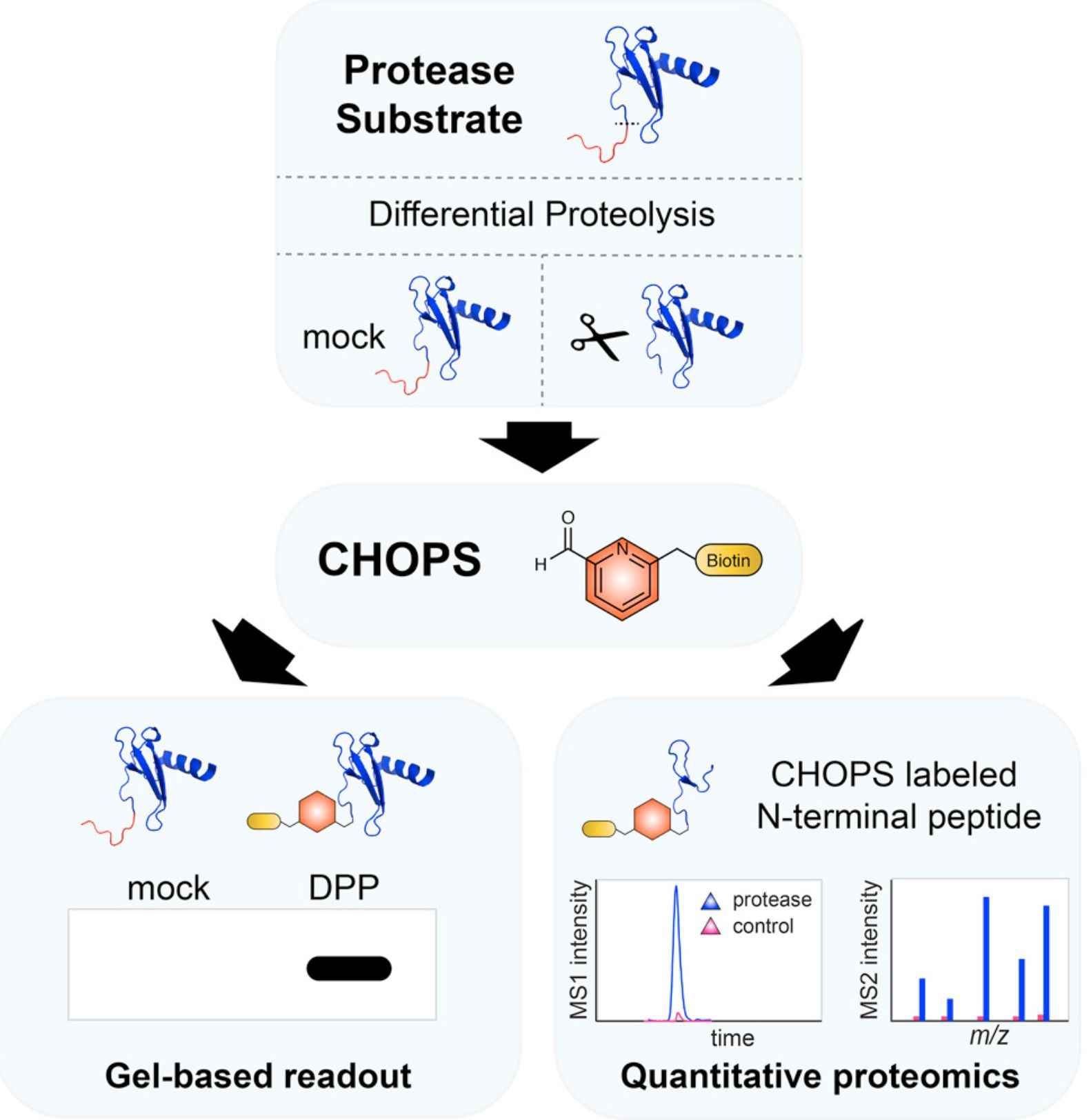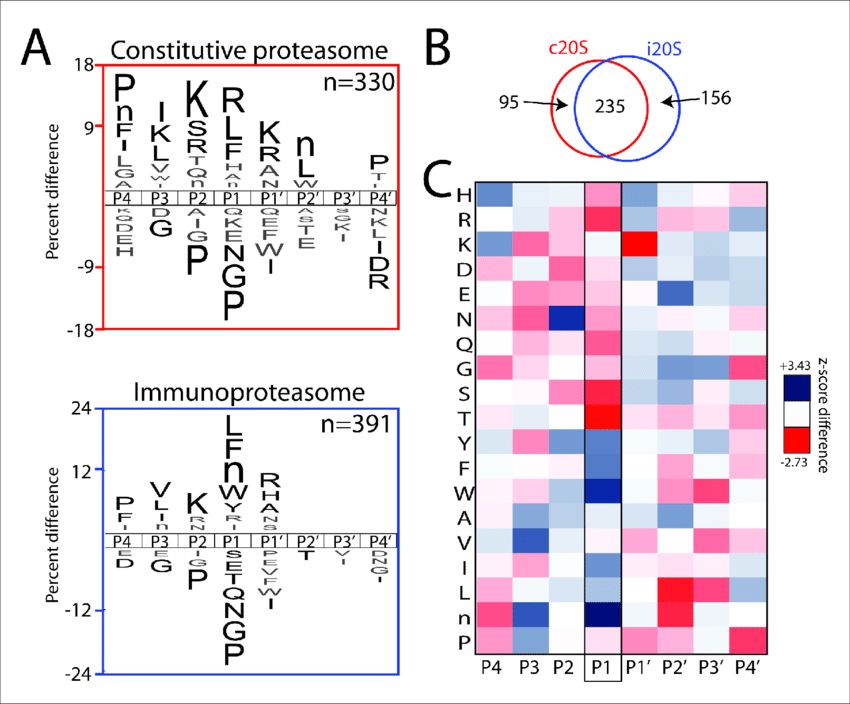Substrate Profiling is a crucial part of enzyme research. It involves identifying the substrates where an enzyme can perform its activity. This process is essential for understanding the enzyme's function, its role in biological processes, and providing insight into life at a molecular level. This study can also contribute significantly to drug discovery and development by identifying potential therapeutic targets. Our services offer a thorough approach to enzyme substrate profiling. We aim to provide an analysis that not only identifies the substrates but also understands the enzyme's interaction with them. This approach gives a clearer picture of its role and potential applications.
 A Chemical Strategy for Protease Substrate Profiling (Andrew R. Griswold, et al., 2019)
A Chemical Strategy for Protease Substrate Profiling (Andrew R. Griswold, et al., 2019)
Service Process
Our comprehensive Enzyme Substrate Profiling Service process is meticulously structured and includes the following detailed steps:
- Sample Preparation and Submission: The first step is a crucial phase that involves diligently preparing the sample and subsequently submitting it for thorough analysis. This is where we ensure that the sample is properly prepared to undergo the subsequent stages, ensuring the highest level of accuracy in our findings.
- Enzyme and Substrate Identification: The next step in our process is the critical identification of the enzyme and its possible substrates. This is the phase where we employ our expertise to identify what substrates the enzyme can act upon, setting the stage for the following steps.
- Analysis of Enzyme-Substrate Interactions: This stage involves an in-depth and comprehensive analysis of how the enzyme interacts with the substrates. Detailed observations are made to understand the enzyme's behavior and interaction patterns with its substrates, providing substantial data for the final stage.
- Data Analysis and Report Generation: The final step in our process is the systematic analysis of the data gathered from the previous stages and the generation of a detailed report based on these findings. This report will provide a thorough understanding of the enzyme-substrate interactions and their implications, offering valuable insights to further your research or application.
We're here to assist you. If you have any questions, need more information, or would like to discuss a potential project, please don't hesitate to contact us. Our team is always eager to help and share our expertise.
Applications
| Application |
Description |
| Drug Discovery |
Substrate profiling plays a vital role in drug discovery processes by aiding in the identification of potential drug candidates and understanding their mechanism of action. It involves screening libraries of compounds against specific enzymes to identify substrates or inhibitors. This helps researchers in selecting lead compounds for further development and optimization of drug candidates. |
| Metabolic Engineering |
Metabolic engineering aims to optimize cellular processes for the production of valuable compounds such as biofuels, pharmaceuticals, and chemicals. Substrate profiling assists in this endeavor by identifying key enzymes and substrates involved in metabolic pathways. This information is utilized to design and engineer efficient biocatalysts, leading to improved yields and productivity. |
| Biotechnology |
Substrate profiling is fundamental in biotechnology for various applications such as characterizing enzyme activities, screening enzyme inhibitors, and developing biocatalysts for industrial processes. It provides valuable insights into enzyme-substrate interactions, enabling the design of enzymes with enhanced specificity, stability, and activity for specific biotechnological applications. |
| Environmental Monitoring |
Environmental monitoring involves assessing the health and integrity of ecosystems and detecting environmental pollutants. Substrate profiling aids in this process by measuring enzyme activities in different environmental samples. Changes in enzyme activities can indicate environmental stressors, pollution levels, or ecological disturbances, providing valuable information for environmental management and conservation efforts. |
| Agriculture |
In agriculture, substrate profiling is employed for understanding plant enzyme activities involved in various physiological processes such as nutrient uptake, defense mechanisms, and stress responses. By elucidating enzyme-substrate interactions, researchers can optimize agricultural practices, develop strategies for pest and disease management, and enhance crop yields and quality, contributing to sustainable agricultural production. |
Case Study
To delve deeper into the substrate specificities of immunoproteasome (iP) and proteasome (cP), a comprehensive approach known as Multiplex Substrate Profiling by Mass Spectrometry (MSP-MS) is utilized in below figure. This innovative methodology employs a balanced mixture of 228 strategically selected 14-mer peptide substrates to provide an unbiased evaluation of protease substrate specificity. The procedure begins with the introduction of iP or cP to the peptide library. Subsequently, peptide cleavage products are identified using liquid chromatography-tandem mass spectrometry (LC-MS/MS) at various time intervals: 60, 120, 240, and 480 minutes. Only cleavage sites that appear in two biological replicates of each proteasome are considered. The findings reveal wide-ranging substrate specificity. The proteasomes show the ability to hydrolyze 391 (for iP) and 330 (for cP) distinct peptide bonds after 480 minutes of incubation, equivalent to 13.2% and 11.1% of the total cleavage sites in the library for iP and cP, respectively. By the 480-minute mark, saturation of new cleavage-site usage is evident, indicating the depletion of the most favored cleavage sites in the library. This observation underscores the capability of the MSP-MS assay to effectively detect the most prevailing cleavage events.
 Global substrate specificity screen of the iP and cP (Michael B Winter, et al., 2017)
Global substrate specificity screen of the iP and cP (Michael B Winter, et al., 2017)
FAQs
Here are some frequently asked questions about Substrate Profiling, a crucial technique in enzyme research. The Q&A covers a range of topics from the basics of the profiling process to its commercial applications. If you have more specific or detailed questions, don't hesitate to get in touch with us directly.
Q: What exactly is Substrate Profiling?
A: Substrate Profiling is a scientific technique that plays a pivotal role in enzyme research. This method is employed to identify the specific substrates—an essential part of a biochemical reaction—that an enzyme can act upon. By identifying these substrates, researchers can gain a deeper understanding of the function of the enzyme and its vital role in biological processes.
Q: Can you explain why it's necessary to study Substrate Profiling?
A: Studying Substrate Profiling is crucial for several reasons. Primarily, it helps in understanding the function of an enzyme, which is key to comprehending more complex biological processes. Furthermore, knowledge of which substrates an enzyme acts upon can provide valuable insights into how it can be harnessed for use in drug discovery and development, potentially leading to breakthroughs in medical treatments.
Q: How is Substrate Profiling conducted in detail?
A: Substrate profiling involves several steps. It begins with sample preparation and submission. After the sample is received, the identification of the enzyme and substrates takes place. This step is crucial as it determines what substrates the enzyme can act upon. Following this, the interactions between the enzyme and the substrates are analysed. This analysis furnishes detailed information on how the enzyme interacts with its substrates, which can be crucial in understanding its function. The final step involves analysing the data collected and generating a report based on the findings.
Q: What types of enzymes can be studied using Substrate Profiling?
A: This technique can be used to study a wide range of enzymes. These include, but are not limited to, hydrolases, ligases, isomerases, and oxidoreductases. The type of enzyme being studied will depend on the specific research question being addressed.
Q: How accurate is Substrate Profiling?
A: The accuracy of Substrate Profiling depends on several factors, including the quality of the sample, the techniques used for enzyme and substrate identification, and the methods used for data analysis. With rigorous quality control and state-of-the-art techniques, we strive to provide the most accurate results possible.
Q: Can Substrate Profiling be used for commercial purposes?
A: Yes, Substrate Profiling has a wide range of commercial applications. It is often used in the pharmaceutical industry for drug discovery and development, as well as in the biotechnology sector for the development of new technologies and products.
Q: How can I access your Substrate Profiling services?
A: To access our Substrate Profiling services, please contact us. We would be more than happy to discuss your specific needs and how we can assist you in your research.

































 A Chemical Strategy for Protease Substrate Profiling (Andrew R. Griswold, et al., 2019)
A Chemical Strategy for Protease Substrate Profiling (Andrew R. Griswold, et al., 2019) Global substrate specificity screen of the iP and cP (Michael B Winter, et al., 2017)
Global substrate specificity screen of the iP and cP (Michael B Winter, et al., 2017)